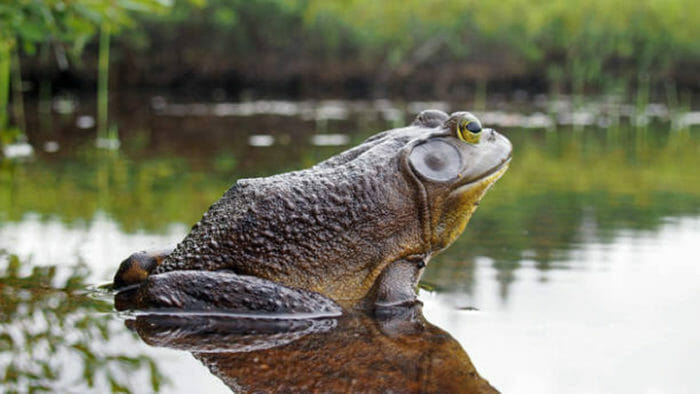It’s Frogging Season in Arkansas
Although turkey season and fishing get top billing in April, another season opens each April 15, and to those who chase this quarry, it’s a powerful draw. Frogging season runs April 15-Dec. 31 in Arkansas, and offers a great escape that’s a little different than most folks are accustomed to.
Bullfrogs are the only species of frog allowed to be caught during the frogging season, and participants must have a valid fishing license to participate. The daily limit on bullfrogs is 18, and a day is measured from noon to noon.
Frogs can be found at the water’s edge of many small ponds and backwaters, especially at night. A bright spotlight or headlamp can be used to scan the shoreline for them in the dark. The frog’s eyes will shine back at you in the light, and the bright beam will dazzle them momentarily, allowing you to sneak within striking distance.
Although some people try for bullfrogs with a bow and fishing arrow, most froggers harvest tool of choice is a gig. Similar to a long spear made of bamboo or cane, a gig will have three or four needle-sharp, barbed tines at the end that are jabbed into the frog then brought back to the user to be placed in a drawstring mesh bag or cooler. Some gigs are tipped with a metal set of jaws that snap closed around the frog instead of stabbing it.
Some people will tell you the only way to hunt frogs is by hand, choosing to challenge themselves by having to get within grabbing distance before striking a dazed frog. The only drawback to hand grabbing frogs is the need to get closer to your target, and the possibility of leaning too far and toppling out of your boat.
Boats must be able to reach very shallow water, so an aluminum flatbottom, kayak or canoe are all options for frog duty. Combined with a 12-volt trolling motor and battery-powered spotlight, a small jonboat is often the best-built craft for the job. Two hunters can work together – one using the light and piloting the craft while the other mans the gigging pole.
Frogs tend to sit on a bank very close to the water. A quiet approach is needed with the light shining squarely on the frog. Get close enough, then use a quick thrust with the gig.
Once caught, frogs can be cleaned by skinning and removing the hind legs. The legs can be prepared just like chicken legs or thighs. Some people prefer them deep-fried in batter, but sauteing the legs in garlic butter also lends itself well to the delicate texture of the meat. Be aware, frog’s legs have a particular quirk that may look like a scene from a science fiction movie. When salt contacts the muscle of freshly skinned frog’s legs before cooking, the legs have a tendency to twitch and wiggle. Old gossips may mention frog’s legs hopping clear out of the frying pan, but these tales are often very exaggerated. The extra movement is a chemical reaction between the muscle and the salt and only lasts for a few moments before cooking. The only movement you’ll see from the legs once they’ve been cooked is watching them disappear from the plate at the dinner table.


